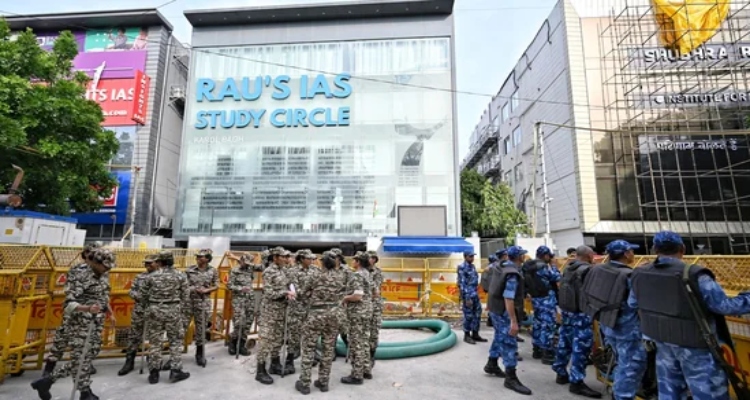
A Delhi court will decide next week whether to allow Rau’s IAS Study Circle access to its Old Rajender Nagar building, where three UPSC aspirants died in July after rainwater flooded the basement.
Chief Judicial Magistrate Nishant Garg scheduled the matter for August 28 after hearing arguments from the advocates involved in the case.
In an application, Rau’s IAS Study Circle CEO Abhishek Gupta requested access to the premises, stating it was necessary for the smooth running of classes.
“Arguments on the application, including those from the counsel for the victims, have been heard. The matter will be considered on August 28, 2024,” the judge said.
Senior advocate Rebecca John, representing Gupta, argued that access to the building was needed for students to continue their studies. She contended that the Central Bureau of Investigation (CBI) could not prohibit access to the building.
“The CBI can prosecute me (Gupta), but they cannot prevent me from entering the building. If they want the building sealed, they should have another agency handle it,” the counsel stated.
The CBI, however, argued that the basement was intended for storage and that the incident occurred because it was being used as a library. “Such an accident could happen again in the near future,” the CBI said, noting that the building lacked safety measures.
The advocate for J Dalvil Suresh, the father of Nevin Dalvil, one of the students who drowned, pointed out that the Supreme Court had ruled that no coaching center could operate without safety measures. The court asked the CBI if it had sealed the upper floors and noted that the agency had not claimed the building was illegal. The CBI responded that it had not sealed the upper floors.
John argued that the building complied with all safety norms and questioned if she would be prevented from entering if it were her residence. She also criticized the CBI for not arresting any government officials, accusing the agency of targeting “weak people.”
The court also heard an application from Manoj Kathuria seeking the release of his SUV from CBI custody. Police had alleged that Kathuria was driving his SUV at high speed through a waterlogged street, creating a wave that broke the coaching center’s gate and allowed rainwater to enter the basement, leading to the students’ deaths. The court criticized the CBI for not releasing the vehicle. “What benefit do you gain by keeping the vehicle? You can inspect it without seizing it,” the court said.
The CBI informed the court that a team of experts from IIT-Delhi had been engaged to determine if the wave created by the vehicle could impact the main gate and its rails. The court directed the investigating officer to update it by August 28 on the expert team’s proceedings.
The CBI also reported that it had preserved the digital video recorder of Rau’s IAS Study Circle and the CCTV footage from Chahal Academy, located in front of the coaching center. Additionally, the court approved Gupta’s request for the release of six vehicles parked at the building’s stilt level, after the CBI indicated it had no objection to their removal.




